Plural Nouns: Most singular nouns are made plural Nouns by just putting an – s toward the end. There are various principles of pluralization based on the fact of what letter a noun closes in. Irregular nouns don’t observe plural thing guidelines, so they should be retained or looked into in the word reference.
Plural Nouns Definition
The word plural is characterized as ‘connecting with or comprising a class of syntactic structures typically used to signify multiple or in certain dialects more than two’ and ‘connecting with, comprising of, or containing multiple or more than one kind or class’, as per the Merriam-Webster dictionary. So a noun that comprises or connects with beyond what one individual, spot or thing can be characterized as a plural noun.
Plural Nouns Rules
There are numerous plural noun rules, and because we use nouns so regularly while composing, knowing every one of them is significant! The right spelling of plurals as a rule relies upon what letter the singular noun closes in.
1) To make regular nouns plural, add ‑s to the end.
- cat – cats
- house – houses
2) If the singular noun ends in ‑s, -ss, -sh, -ch, -x, or -z, add ‑es to the end to make it plural.
- truss – trusses
- bus – buses
- marsh – marshes
- lunch – lunches
- tax – taxes
- blitz – blitzes
3) In some cases, singular nouns ending in -s or -z, require that you double the -s or -z prior to adding the -es for pluralization.
- fez – fezzes
- gas –gasses (note that gases is also an acceptable, and more commonly used, spelling of this plural noun)
4) If the noun ends with ‑f or ‑fe, the f is often changed to ‑ve before adding the -s to form the plural version.
- wife – wives
- wolf – wolves
Exceptions:
- roof – roofs
- belief – beliefs
- chef – chefs
- chief – chiefs
5) If a singular noun ends in ‑y and the letter before the -y is a consonant, change the ending to ‑ies to make the noun plural.
- city – cities
- puppy – puppies
6) If the singular noun ends in -y and the letter before the -y is a vowel, simply add an -s to make it plural.
- ray – rays
- boy – boys
7) If the singular noun ends in ‑o, add ‑es to make it plural.
- potato – potatoes
- tomato – tomatoes
Exceptions:
- photo – photos
- piano – pianos
- halo – halos
With the unique word volcano, you can apply the standard pluralization for words that end in -o or not. It’s your choice! Both of the following are correct:
- volcanoes
- Volcanos
8) If the singular noun ends in ‑us, the plural ending is frequently ‑i.
- cactus – cacti
- focus – foci
9) If the singular noun ends in ‑is, the plural ending is ‑es.
- analysis – analyses
- ellipsis – ellipses
10) If the singular noun ends in ‑on, the plural ending is ‑a.
- phenomenon – phenomena
- criterion – criteria
11) Some nouns don’t change at all when they’re pluralized.
- sheep – sheep
- series – series
- species – species
- deer –deer
You need to see these nouns in context to identify them as singular or plural. Consider the following sentence:
Example: Mark caught one fish, but I caught three fish.
However, when it comes to fish, things can get a little complicated.
Plural Noun And Tense Forms
| S. No. | Tense | Plural Form |
| 1 | Simple Present Tense |
These cars are wonderful.
All the broken doors are fixed. |
| 2 | Present Continuous Tense |
The children are playing cricket in front of our house.
The teachers are attending a meeting now. |
| 3 | Present Perfect Tense |
The students have been asked to submit their assignments before 9 a.m. on Tuesday.
The dogs from the street have been rescued and put in adoption centres. |
| 4 | Present Perfect Continuous Tense |
The college students have been waiting for an industrial visit for so many months now.
All the employees have been doing the job really well. |
| 5 | Simple Past Tense |
The teachers were late for class.
The meetings for the day were cancelled due to the commotion in the building. |
| 6 | Past Continuous Tense |
All the residents were being evacuated.
The rivers in the area were overflowing due to the heavy rainfall yesterday. |
| 7 | Past Perfect Tense (remains the same for singular and plural nouns) |
The police had been on the hunt for these robbers for a month now.
The shops had been closed because of the protest. |
| 8 | Past Perfect Continuous Tense (remains the same for singular and plural nouns) |
The people had been waiting for this for so many years.
The scientists had been working day and night to find a cure for COVID – 19. |
| 9 | Simple Future Tense (remains the same for singular and plural nouns) |
The meteors will hit the Earth’s surface.
These birds will migrate to the North during the Summer. |
| 10 | Future Continuous Tense (remains the same for singular and plural nouns) |
The singers will be performing at a live concert next week.
The accessories for the event will be arriving on Tuesday. |
| 11 | Future Perfect Tense (remains the same for singular and plural nouns) |
The politicians will have taken their oaths by this time tomorrow.
The newspapers will have circulated by the time you decide what to do with this article. |
| 12 | Future Perfect Continuous Tense (remains the same for singular and plural nouns) |
This Thursday, we will have been living in New York for a year.
On this annual day, the children will have been performing this piece for the tenth time. |
Plural Nouns Examples
Plural Noun Examples in Subject-Verb Agreement
While utilizing plural nouns, take care to change the action word appropriately so the sentences don’t look grammatically mistaken. The action words structures utilized alongside a plural noun incorporate, are (straightforward current state), were (basic past tense), are+verb+ing, were+verb+ing, have+past participle, have+been+past participle, will+have+verb+ing and will+have+past participle.
Examples:
- None of the students has completed their homework. (Group of people)
- All the rescued animals have been returned to their natural habitats safely. (Group of different animals)
- The textbooks and notebooks are kept on the shelves. (Objects)
- All schools in the city are shut down due to the political protests carried out in and around the city.
Plural Nouns List
More singular nouns with their plural forms are listed below.
| Singular nouns | Plural nouns |
| analysis | analyses |
| status | status/statuses |
| moose | moose |
| crisis | crises |
| fish | fish / fishes |
| series | series |
| appendix |
appendixes / appendices
|
| Mr. / Mr / Mister |
Misters / Messrs. / Messrs
|
| sheep | sheep |
| bus |
buses / US also busses
|
| formula |
formulae / formulas
|
| life | lives |
| apparatus | apparatuses |
| deer | deer |
| ox | oxen |
| focus | focuses / foci |
| basis | bases |
| platypus | platypuses |
| cactus | cacti / cactuses |
| sheep | sheep |
| analysis | analyses |
| woman | women |
| equipment | equipment |
| dice | dice |
| leaf | leaves |
| life | lives |
| phenomenon | phenomena |
| staff | staff |
| alumnus | alumni |
| genius | geniuses |
| radius | radii / radiuses |
| staff | staff |
| alumnus | alumni |
| software | software |
| data | data |
| addendum | addenda |
| virus | viruses |
| synopsis | synopses |
| mongoose | mongooses |
| genus | genera |
| formula |
formulae / formulas
|
| roof | roofs |
| phenomenon | phenomena |
| medium |
media / mediums
|
| business | businesses |
| datum | data |
| chassis | chassis |
| crisis | crises |
| hero | heroes |
| axis | axes |
Plural Nouns Worksheet
If you already read the article to this part, now it is time to test your knowledge. Try to answer the plural forms of the following words and at last match your answer with the sheet.
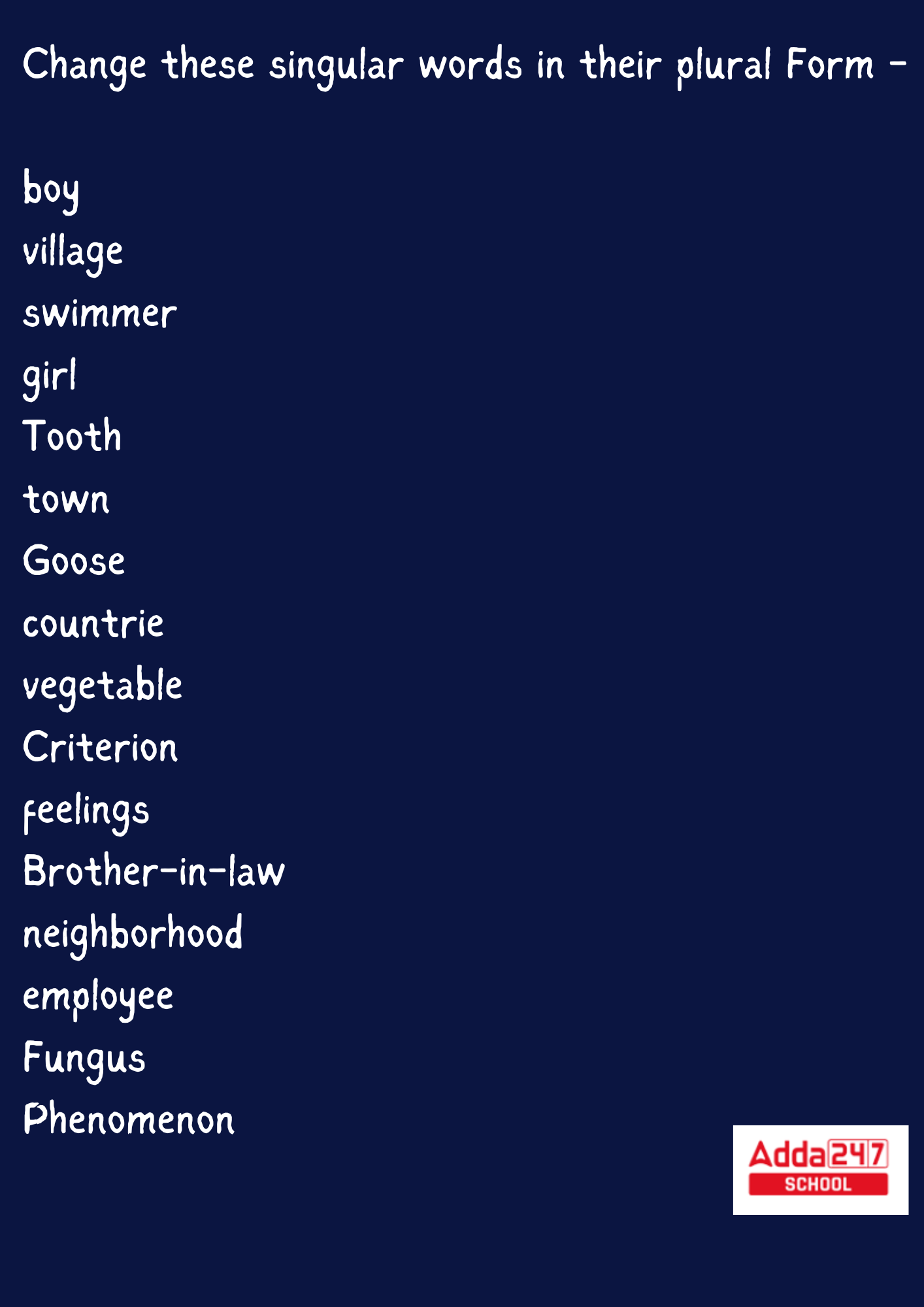
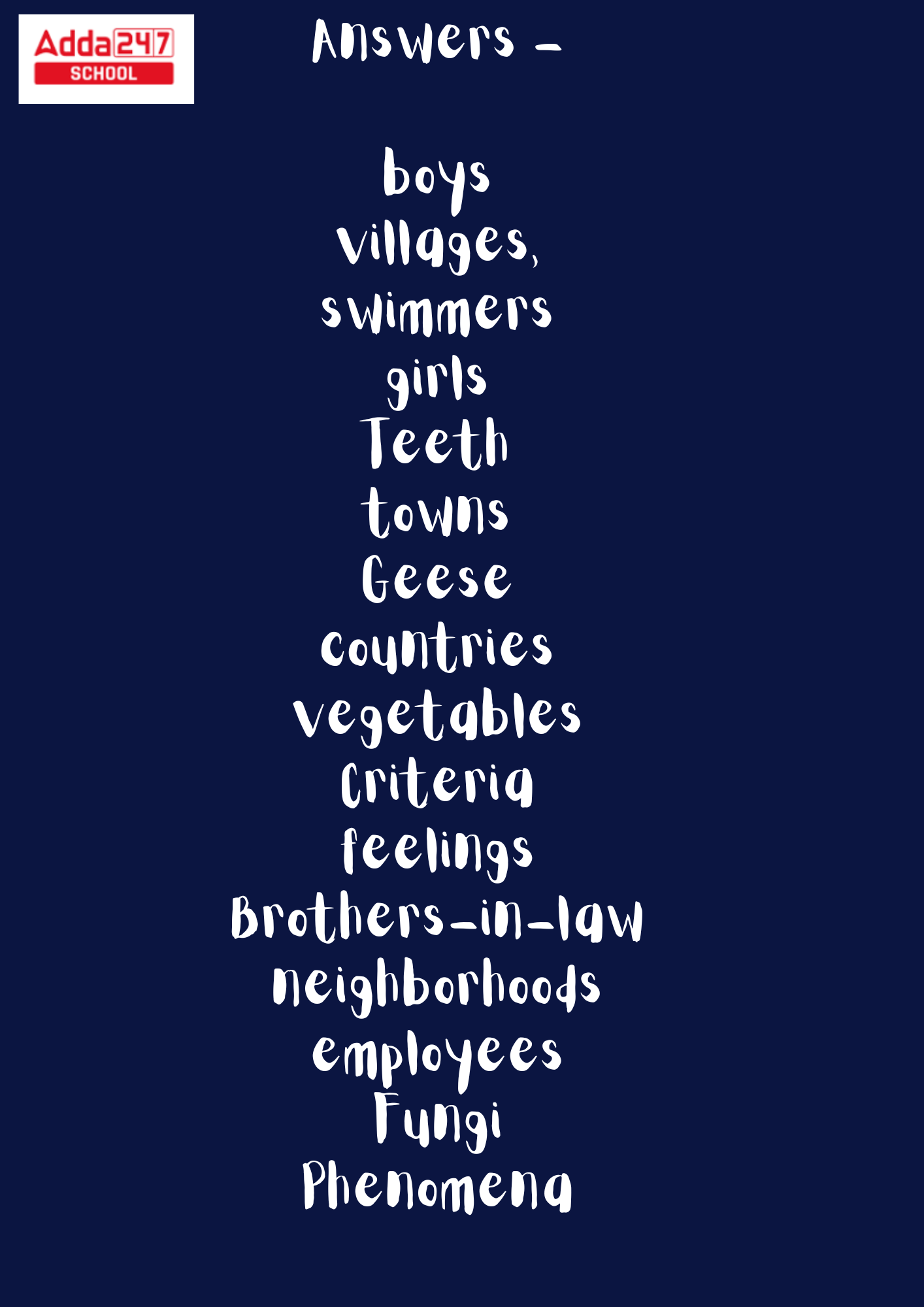
| Related Articles | |
| Common Nouns | Proper Nouns |
| Singular Nouns | Abstract Nouns |
| Possessive Nouns | Compound Nouns |

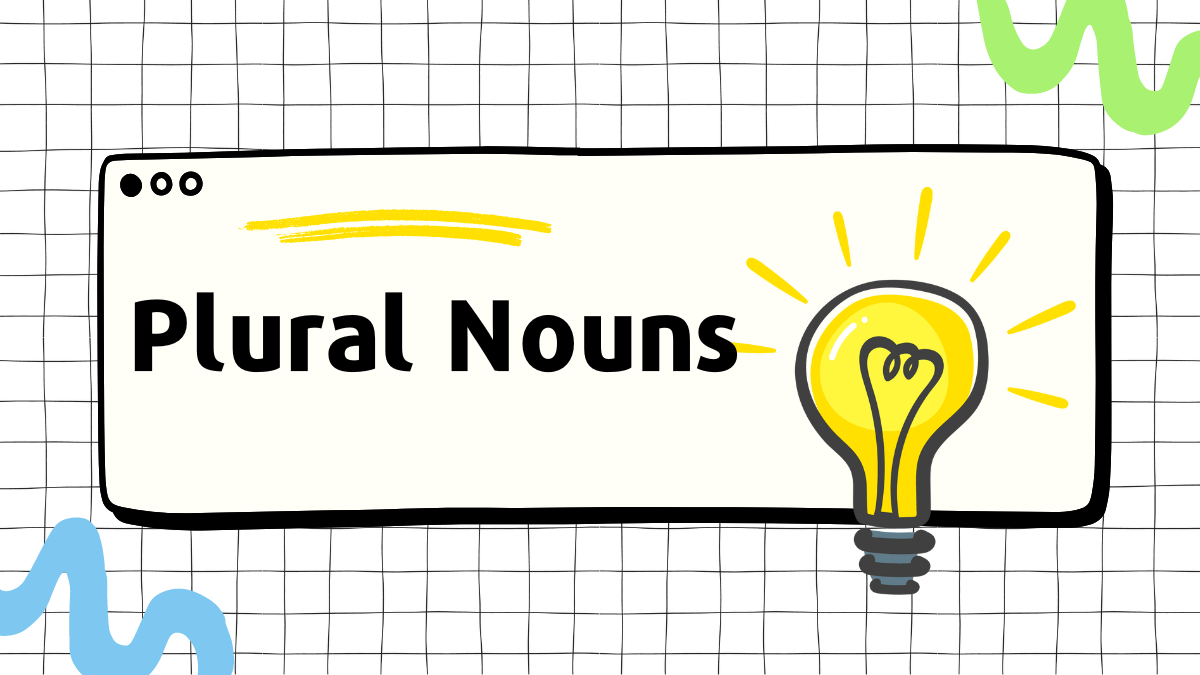







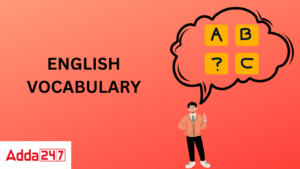 Vocabulary Words with Meaning and Senten...
Vocabulary Words with Meaning and Senten...
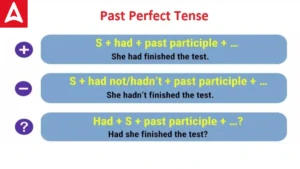 Past Perfect Tense: Definition, Formula,...
Past Perfect Tense: Definition, Formula,...
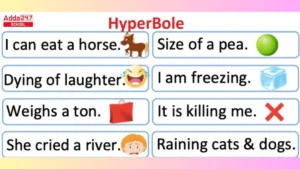 Hyperbole- Explanation, Definition, Exam...
Hyperbole- Explanation, Definition, Exam...









